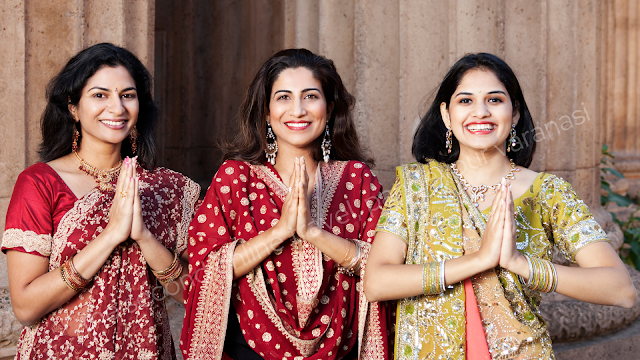.png)
Namaste: The perfect Travel Partner, The 2nd Online Travel
 Namaste is a Sanskrit word that refers to an honourable salutation made by bringing two palms together. Namaste signifies "I am bowing before your feet" and "the God who dwells in me salutes the God who dwells within you." Namaste signifies gratitude, reverence, and respect for others. In recent times across the West, Namaste has become more well-known due to the growth of Yoga.
Namaste is a Sanskrit word that refers to an honourable salutation made by bringing two palms together. Namaste signifies "I am bowing before your feet" and "the God who dwells in me salutes the God who dwells within you." Namaste signifies gratitude, reverence, and respect for others. In recent times across the West, Namaste has become more well-known due to the growth of Yoga.What does the word Namaste mean?
The context of the word determines what it means. The word "namaste" can carry different meanings, including those that read: "I bow to you with reverence," "I honour your divinity," "I humbly bow to God in your heart," and "I welcome the divine light within you." "I thank the God of heaven and earth."
The word Namaste is used in Vedic Literature; Namaste is an amalgamation of "Namah" and "Te." Namah has the form of Sandhi. It's a mix of "Namah", bow or worship, reverence and 'greeting with bows and 'te', pronoun in the second person and the dative form: 'you.'
The Proper way to do Namaste
Most people usually speak and then join their palms simultaneously to say Namaste. However, to practice Namaste properly, it is best to first bring both palms to the Heart Chakra (Chest area) with your fingers pointed upwards and then bow your head and pronounce Namaste.
Namaste in Yoga
The namaste movement in Yoga can stimulate the free movement of prana, the subtle universal energy in you. This prana energy's freedom and unimpeded movement within the body are essential to your health and positive outlook.
Namaste yoga, or the gesture, is also a part of the Yoga Mudras system. While it is commonly used to greet guests in almost every yoga studio, the correct way to perform it is in a specific posture and with a particular manner of speaking.
.png) Within Yoga theology, Namaste can also be called Anjali mudra (prayer posture). The "Anjali" gesture is a sign of reverence and humility.
Within Yoga theology, Namaste can also be called Anjali mudra (prayer posture). The "Anjali" gesture is a sign of reverence and humility.Conclusion
Namaste literally means "bowing you". In Hinduism, the word has an additional spiritual significance, reflecting a belief that "the Divine and Self (atman, or Self) is the same within me and you" and implies "I bow to your divine self".
In India, Namaste, a traditional Indian greeting, is now well-recognized everywhere in the world and is a safe way to greet someone. You do not need to contact anyone physically whom you are greeting, which helps prevent any contagious or infectious diseases, thereby maintaining social distancing.Simultaneously, it is also the best form of greeting from a yoga and spiritual standpoint.

.png)
.png)
.png)
.png)
.png)

Comments
Post a Comment